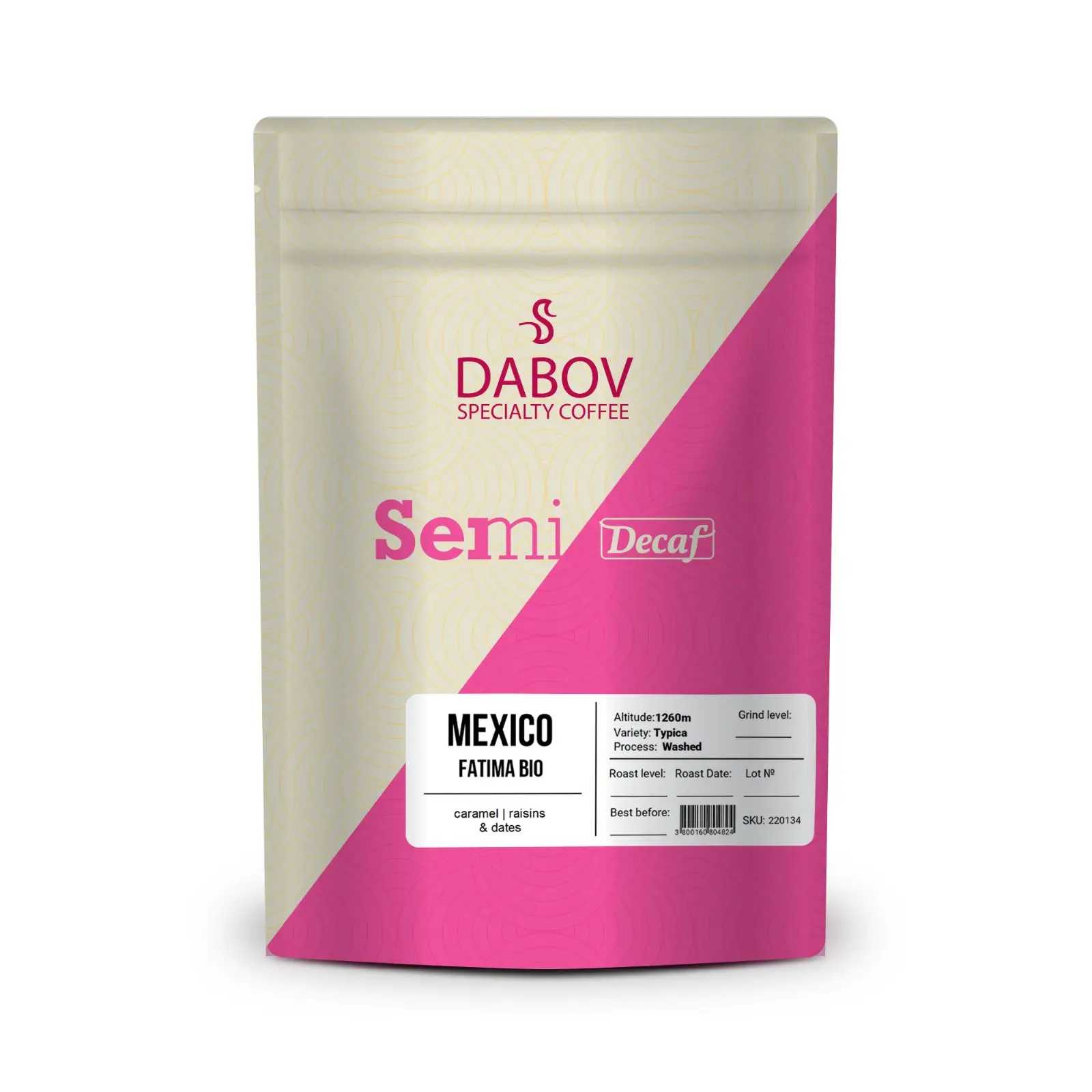How Global Events Influence Coffee Prices
The coffee market is inextricably linked to global events, influencing prices in ways that can catch even the most seasoned buyers off guard. From natural disasters disrupting supply chains to geopolitical tensions affecting trade agreements, global occurrences significantly shape the coffee economy. Understanding these connections not only helps coffee lovers appreciate their morning brew more, but it also sheds light on the complex dynamics at play in one of the world's most traded commodities. This article dives deeper into how current events, climate change, and economic factors contribute to fluctuations in coffee prices, offering insights for consumers, producers, and policymakers alike. Discover the intricate web of factors influencing the coffee you drink every day and how they relate to broader economic trends across the globe.
In the intricate tapestry of global commerce, few commodities weave as complex a pattern as coffee. As one of the world's most traded agricultural products, coffee prices are subject to a myriad of influences, with global events playing a pivotal role in shaping market dynamics. This article delves deep into the multifaceted relationship between worldwide occurrences and the fluctuations in coffee prices, offering insights that will enlighten both industry professionals and passionate coffee enthusiasts alike.
The Coffee Market Landscape
Current Coffee Market Overview
The coffee market is a vibrant and ever-evolving ecosystem, characterized by its global reach and significant economic impact. As of 2023, the global coffee market is valued at approximately $465 billion, with projections suggesting continued growth in the coming years. This robust market is driven by an intricate balance of supply and demand, with annual global coffee production hovering around 170 million 60-kilogram bags.
The market's complexity is further underscored by the diversity of coffee varieties and origins. Arabica coffee, known for its smooth, nuanced flavors, accounts for about 60% of global production, while the hardier Robusta variety makes up the remaining 40%. These two main types are cultivated across what's known as the "Coffee Belt," a region spanning tropical and subtropical areas around the equator, including countries in South and Central America, Africa, and Asia.
Production levels can vary significantly from year to year, influenced by factors such as weather conditions, pest infestations, and socio-economic circumstances in coffee-growing regions. For instance, Brazil, the world's largest coffee producer, saw its 2021/2022 crop reduced by approximately 20% due to severe frost and drought, a stark reminder of how vulnerable the coffee supply chain can be to environmental factors.
Importance of Coffee to Global Economies
Coffee's significance extends far beyond our morning routines; it is a crucial economic pillar for many countries, particularly in the Global South. In nations like Ethiopia, Uganda, and Colombia, coffee exports can account for a substantial portion of foreign exchange earnings and GDP. For example, in Ethiopia, coffee exports represent about 30% of the country's total export earnings, highlighting the crop's vital role in the nation's economy.
The coffee industry creates a complex value chain that supports millions of livelihoods worldwide. It's estimated that over 25 million farmers, primarily smallholders, depend on coffee production for their income. Moreover, the industry generates employment throughout the supply chain, from pickers and processors to exporters, roasters, and baristas.
Coffee's economic impact is not limited to producing countries. In consuming nations, the coffee industry contributes significantly to the service sector, with coffee shops and cafes serving as important social hubs and sources of employment. In the United States alone, the coffee industry is responsible for nearly 1.7 million jobs and generates over $225 billion in annual economic impact.
The global nature of the coffee trade also makes it an important factor in international relations and development initiatives. Fair trade and sustainability programs in the coffee sector have become models for ethical trade practices, aiming to ensure better livelihoods for farmers and promote environmentally friendly cultivation methods.
Economic Factors Influencing Coffee Prices
Supply Chain Disruptions
The coffee supply chain is a complex network spanning continents, and disruptions at any point can have significant ripple effects on global coffee prices. Natural disasters, political unrest, or global health crises can all lead to supply chain bottlenecks that impact coffee availability and, consequently, its price.
For instance, the COVID-19 pandemic caused unprecedented disruptions to the coffee supply chain. Lockdowns and labor shortages in producing countries led to harvesting delays and reduced processing capacity. Simultaneously, shipping container shortages and port congestions created logistical nightmares, increasing transportation costs and delivery times. These factors combined to create upward pressure on coffee prices, with the ICO Composite Indicator Price increasing by over 30% between October 2020 and October 2021.
Climate-related events can also severely disrupt the supply chain. The 2021 frost in Brazil, mentioned earlier, not only reduced the immediate coffee supply but also had long-lasting effects on future harvests, as damaged trees require years to recover fully. Such events can create supply uncertainties that lead to speculative buying and price volatility in the coffee futures market.
Currency Fluctuations and Trade Policies
The global coffee market operates primarily in US dollars, making exchange rates a crucial factor in determining coffee prices. When the currency of a major coffee-producing country depreciates against the dollar, it can lead to increased exports as coffee becomes relatively cheaper for foreign buyers. Conversely, a strengthening local currency can make exports less competitive, potentially leading to reduced supply in the global market and upward pressure on prices.
For example, the Brazilian Real's fluctuations have historically had significant impacts on global coffee prices. A weaker Real encourages Brazilian farmers to sell more coffee on the international market, potentially leading to increased supply and downward pressure on global prices. Conversely, a stronger Real can lead to reduced exports and higher global prices.
Trade policies and agreements also play a vital role in shaping coffee prices. Tariffs, quotas, and trade deals can significantly impact the flow of coffee between countries. The implementation of the United States-Mexico-Canada Agreement (USMCA) in 2020, for instance, maintained duty-free access for coffee, helping to keep prices stable for North American consumers. Conversely, trade tensions or the imposition of new tariffs can lead to price increases as importers pass on additional costs to consumers.
Global Coffee Consumption Trends
Coffee consumption patterns worldwide have a direct impact on demand and, consequently, on prices. In recent years, there has been a noticeable shift in coffee consumption trends, particularly in emerging markets. China, for instance, has seen a rapid growth in coffee consumption, with the market expanding at an annual rate of about 15%. This growing demand from new markets can put upward pressure on global coffee prices.
Simultaneously, there's been a trend towards premium and specialty coffees in mature markets like North America and Europe. Consumers are increasingly willing to pay higher prices for high-quality, sustainably sourced coffees. This trend has led to a bifurcation in the market, with specialty coffees commanding significant price premiums over commodity-grade coffee.
The rise of coffee shop culture and at-home brewing during the COVID-19 pandemic has also influenced consumption patterns. While out-of-home consumption decreased during lockdowns, retail sales of coffee for home consumption surged. This shift demonstrated the resilience of coffee demand and helped maintain price stability during an otherwise turbulent economic period.
Major Global Events and Their Impact on Coffee Prices
Natural Disasters
Natural disasters in coffee-producing regions can have immediate and long-lasting effects on coffee prices. These events can range from hurricanes and floods to droughts and frosts, each with the potential to devastate coffee crops and disrupt production.
One of the most significant natural disasters to impact the coffee market in recent history was the coffee leaf rust outbreak in Central America between 2012 and 2017. This fungal disease, exacerbated by changing climate conditions, destroyed vast swathes of coffee plants across the region. In Honduras alone, coffee leaf rust reduced production by 31% between 2011 and 2014. The resulting supply shortage led to a spike in coffee prices, with the ICO Composite Indicator Price reaching a peak of 185.09 US cents/lb in April 2011.
Another notable event was the 1994 Brazilian frost, which destroyed a significant portion of Brazil's coffee crop. As Brazil is the world's largest coffee producer, this event had a dramatic impact on global coffee prices. In July 1994, coffee futures on the New York market surged to $2.74 per pound, more than double the price just two months earlier.
These examples underscore the vulnerability of coffee production to natural disasters and the subsequent impact on global prices. As climate change increases the frequency and severity of extreme weather events, the coffee industry faces growing challenges in maintaining stable production and prices.
Pandemic Effects (COVID-19)
The COVID-19 pandemic has had far-reaching effects on the coffee industry, influencing both supply and demand dynamics and, consequently, coffee prices. Initially, the pandemic led to panic buying and stockpiling of coffee by consumers, causing a short-term spike in demand. However, as lockdowns were implemented globally, out-of-home consumption plummeted, offsetting the increase in at-home consumption.
On the supply side, coffee-producing countries faced significant challenges. Labor shortages due to illness and lockdown measures affected harvesting and processing in many regions. In Colombia, for instance, coffee production in April 2020 fell by 28% year-on-year due to pandemic-related disruptions.
Logistical issues further compounded the situation. Shipping container shortages, port congestions, and increased freight costs created bottlenecks in the coffee supply chain. These factors led to increased volatility in coffee prices throughout 2020 and 2021.
Interestingly, despite these challenges, overall coffee prices remained relatively stable in the early months of the pandemic, with the ICO Composite Indicator Price averaging 107.25 US cents/lb in 2020, compared to 100.05 US cents/lb in 2019. However, as the pandemic's effects on production and logistics became more pronounced, prices began to rise significantly in late 2020 and throughout 2021.
The pandemic also accelerated certain trends in the coffee industry, such as the shift towards online purchasing and at-home brewing, which may have long-term implications for coffee demand and pricing strategies.
Geopolitical Conflicts and Trade Wars
Geopolitical events and trade disputes can have significant impacts on coffee prices by disrupting established trade flows and creating market uncertainties. These events can range from regional conflicts in coffee-producing areas to large-scale trade wars between major economic powers.
For instance, the ongoing conflict in Ethiopia's Tigray region has raised concerns about potential disruptions to the country's coffee exports. Ethiopia is Africa's largest coffee producer and the world's third-largest producer of Arabica coffee. Any significant disruption to Ethiopian coffee exports could lead to supply shortages and price increases, particularly for specialty Arabica varieties.
Trade wars can also have indirect effects on coffee prices. The US-China trade war that began in 2018 led to a slowdown in global economic growth and a decrease in commodity prices across the board. While coffee was not directly targeted in the tariffs, the general economic uncertainty and reduced consumer spending in both countries had a dampening effect on coffee demand and prices.
Another example is the impact of economic sanctions. The sanctions imposed on Russia following its invasion of Ukraine in 2022 led to a sharp depreciation of the Russian ruble. This currency weakness made coffee imports more expensive for Russian buyers, potentially reducing demand from one of the world's largest coffee-consuming nations.
Climate Change
Climate change represents one of the most significant long-term threats to coffee production and price stability. Rising temperatures, changing rainfall patterns, and increased frequency of extreme weather events are already impacting coffee-growing regions around the world.
A study published in the Proceedings of the National Academy of Sciences predicts that climate change could reduce the global area suitable for coffee production by up to 50% by 2050. This reduction in suitable growing areas could lead to significant supply shortages and price increases in the coming decades.
Climate change is also altering the quality of coffee beans. Higher temperatures can cause coffee cherries to ripen too quickly, leading to lower quality beans. This could potentially reduce the supply of high-quality Arabica coffee, leading to price premiums for the diminishing supply of top-grade beans.
Moreover, climate change is exacerbating the spread of pests and diseases that affect coffee plants. The coffee berry borer, for instance, is now found at higher altitudes due to warming temperatures, threatening previously unaffected coffee farms.
These climate-related challenges are likely to lead to more frequent supply shocks and increased price volatility in the coffee market. They also underscore the urgent need for adaptation strategies in coffee-producing regions and may drive shifts in global coffee production patterns.
Coffee Price Trends Over Time
Historical Coffee Price Patterns
Coffee prices have historically been characterized by significant volatility, with dramatic booms and busts that reflect the complex interplay of supply, demand, and external factors. Understanding these historical patterns provides valuable context for interpreting current price trends and forecasting future movements.
One of the most notable periods in coffee price history was the coffee crisis of the late 1990s and early 2000s. Following the collapse of the International Coffee Agreement's quota system in 1989, coffee prices entered a prolonged period of decline. By 2001, coffee prices had fallen to their lowest levels in 30 years, with the ICO Composite Indicator Price averaging just 45.59 US cents/lb for the year. This price crash had devastating effects on coffee-producing communities and led to increased attention on the need for sustainable pricing models in the coffee industry.
The market rebounded strongly in the mid-2000s, driven by growing demand from emerging markets and supply concerns. Prices peaked in 2011, with the ICO Composite Indicator reaching an annual average of 210.39 US cents/lb. This price spike was attributed to a combination of factors, including poor harvests in key producing countries, increased speculative activity in coffee futures markets, and robust demand growth.
Since 2011, coffee prices have generally trended downward, albeit with significant volatility. The period from 2017 to 2019 saw particularly low prices, with the ICO Composite Indicator averaging below 100 US cents/lb, leading to renewed concerns about the economic sustainability of coffee farming.
More recently, coffee prices have shown an upward trend, with the ICO Composite Indicator reaching 192.38 US cents/lb in February 2022, its highest level in a decade. This price increase has been driven by a combination of factors, including supply chain disruptions related to the COVID-19 pandemic, adverse weather conditions in Brazil, and increased production costs.
Forecasting Future Price Trends
Predicting future coffee prices is a complex task given the multitude of variables that can influence the market. However, several key factors are likely to shape price trends in the coming years:
- Climate Change Impact: As discussed earlier, climate change poses a significant threat to coffee production. The potential reduction in suitable growing areas and increased frequency of extreme weather events are likely to create upward pressure on prices in the long term.
- Demand Growth in Emerging Markets: Continued economic growth and changing consumer preferences in countries like China and India could drive increased demand for coffee, potentially supporting higher prices.
- Specialty Coffee Trend: The growing consumer preference for high-quality, sustainably sourced coffee in mature markets may lead to a continued bifurcation of the market, with premium prices for specialty coffees.
- Technological Advancements: Innovations in coffee production, such as the development of climate-resistant varieties or improved farming techniques, could help mitigate some supply risks and stabilize prices.
- Global Economic Conditions: The overall state of the global economy, including factors like economic growth rates, inflation, and currency fluctuations, will continue to influence coffee demand and prices.
- Sustainability Initiatives: Increased focus on sustainability and fair pricing in the coffee industry could lead to the implementation of price floors or other mechanisms to ensure more stable incomes for coffee farmers.
While short-term price fluctuations are likely to continue, the long-term trend for coffee prices is generally expected to be upward. This projection is based on the anticipated supply challenges related to climate change and the expected growth in global coffee demand.
However, it's important to note that coffee price forecasts are subject to significant uncertainty. Unexpected events, such as breakthrough agricultural innovations or major geopolitical shifts, could dramatically alter the trajectory of coffee prices.
The Global Impact of Coffee Economics
Impact on Producers and Farmers
The economics of coffee have profound implications for the millions of farmers and workers involved in coffee production worldwide. Coffee price fluctuations can significantly impact the livelihoods and economic stability of coffee-growing communities, particularly in developing countries where coffee is a key export crop.
During periods of low coffee prices, such as the coffee crisis of the early 2000s, many farmers struggle to cover their production costs, leading to reduced investment in farms, lower quality crops, and in some cases, abandonment of coffee farming altogether. This can have ripple effects throughout local economies, leading to increased poverty, reduced access to education and healthcare, and migration from rural areas.
Conversely, periods of high coffee prices can bring prosperity to coffee-growing regions. Higher incomes allow farmers to invest in their farms, improve their living standards, and contribute more to their local economies. However, the volatility of coffee prices makes it challenging for farmers to plan for the long term or make significant investments in their operations.
The impact of coffee economics on producers has led to increased focus on sustainability initiatives in the coffee industry. Fair Trade certification, for instance, aims to ensure a minimum price for coffee farmers, providing a safety net during periods of low market prices. Similarly, direct trade relationships between roasters and farmers can help provide more stable incomes and incentivize quality improvements.
Climate change adds another layer of complexity to the challenges faced by coffee producers. Adapting to changing growing conditions often requires significant investment in new farming techniques or even relocation to more suitable areas. The economic pressure of these adaptations, combined with price volatility, poses a significant challenge for many smallholder farmers.
Consumer Effects
On the consumer side, coffee price fluctuations can influence purchasing behavior and overall coffee consumption patterns. While coffee demand is generally considered inelastic – meaning consumption doesn't change dramatically with price changes – significant price increases can lead to shifts in consumer behavior.
During periods of high coffee prices, consumers may:
- Switch to lower-cost coffee brands or varieties
- Reduce their out-of-home coffee consumption
- Seek out alternative caffeine sources
- Invest in home brewing equipment to save money in the long run
Conversely, periods of low coffee prices may encourage increased consumption and experimentation with premium or specialty coffees.
The impact of coffee prices on consumers varies across different markets. In mature coffee markets like the United States and Europe, where coffee is deeply ingrained in daily routines, consumption tends to be less sensitive to price changes. In emerging markets, where coffee culture is still developing, price fluctuations may have a more noticeable impact on consumption trends.
It's worth noting that retail coffee prices don't always directly reflect changes in global coffee commodity prices. Roasters and retailers often absorb some of the price fluctuations to maintain stable retail prices and protect market share. However, prolonged periods of high coffee prices eventually lead to increases in retail prices, as seen in 2021 and 2022 when major coffee chains and brands announced price hikes in response to increased input costs.
The growing consumer interest in the story behind their coffee – including how it's produced and its impact on farming communities – has also led to increased willingness to pay premium prices for sustainably sourced, high-quality coffees. This trend has created opportunities for differentiation in the coffee market and has the potential to support more stable incomes for coffee farmers.
Conclusion
The intricate relationship between global events and coffee prices underscores the complexity of the coffee industry and its far-reaching economic impacts. From climate change and natural disasters to pandemics and geopolitical conflicts, a wide array of factors can influence the delicate balance of coffee supply and demand, leading to price fluctuations that reverberate throughout the global economy.
Understanding these dynamics is crucial not only for industry stakeholders but also for consumers who want to make informed choices about their coffee consumption. As we look to the future, the challenges facing the coffee industry – particularly those related to climate change and sustainability – will require innovative solutions and collaborative efforts across the entire coffee value chain.
The coffee industry's response to these challenges will shape not only the future of coffee prices but also the livelihoods of millions of people involved in coffee production and the cultural significance of coffee in societies around the world. By staying informed about the factors influencing coffee prices and supporting sustainable practices in the coffee industry, we can all play a part in shaping a more resilient and equitable future for this beloved beverage.
Additional Resources
For those interested in delving deeper into the world of coffee economics and global market dynamics, the following resources offer valuable insights and data:
- International Coffee Organization (ICO): <https://www.ico.org/>The ICO provides comprehensive statistics, reports, and analysis on the global coffee sector.
- Specialty Coffee Association (SCA): <https://sca.coffee/>The SCA offers research, education, and events focused on specialty coffee.
- World Coffee Research: <https://worldcoffeeresearch.org/>This organization conducts scientific research to improve coffee quality, yield, and resilience in the face of climate change.
- Coffee Barometer: <https://coffeebarometer.org/>A biennial report that provides an overview of sustainability issues in the coffee sector.
- USDA Foreign Agricultural Service Coffee Reports: <https://www.fas.usda.gov/commodities/coffee>Offers detailed reports on coffee production, trade, and consumption worldwide.
These resources provide a wealth of information for anyone looking to gain a deeper understanding of the complex world of coffee economics and its global impact.




























